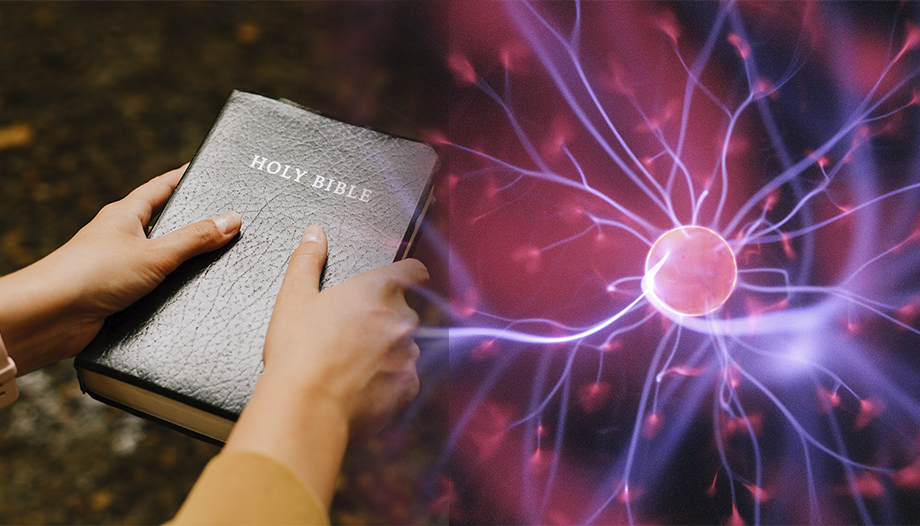Three school years. One thousand students. One project: to study the treatment of science and religion in Spanish schools. This is the context in which the research aimed at finding out the main pedagogical problems related to the major issues involving science and religion in Spanish schools was carried out.
From September 2018 until last May, thanks to a grant from the John Templeton Foundation, Javier Sánchez Cañizares, director of the Group "Science, Reason and Faith". and researcher at the Culture and Society Institute of the University of Navarra, has led this research group, whose project, as Sánchez Cañizares points out in this interview, has revealed, among other things, the need to offer students "representations of the truths of faith that are compatible with the vision of the world offered by science".
Spain is now at a turning point with regard to religious education in schools; in fact, work is currently underway to develop a new Religion curriculum. In a certain way, in recent decades, doesn't it seem to you that the subject of Religion has been considered something like a "separate" subject, unrelated to the other human and social sciences?
The truth is that I am not an expert on the matter and I would prefer not to make categorical statements in this regard. Also because the religion class does not only depend on the curriculum or the textbook used, but also on the teacher and the way he/she invites and introduces the students to this exciting journey that should be the subject of Religion.
Of course, I do believe that in recent times there has been something of what the question insinuates. It is not a simple problem to solve, because there is always a difficult balance between maintaining the identity of its own content and being open to dialogue and interaction with other human knowledge. Perhaps we have insisted so much on the identity of the subject of Religion that we have forgotten the religious dimension latent in other fields of knowledge, with the risk of turning the subject of Religion into a kind of meteorite fallen from the sky.
Obviously, the problem is not only, nor to a greater extent, of the teachers of Religion, but of the teaching in general, also of the teachers of other subjects who silence, out of shame or ignorance, the implicit religious openness that may be present in their subjects.
Perhaps we have forgotten the religious dimension latent in other fields of knowledge, with the risk of turning the subject of Religion into a kind of meteorite fallen from the sky.
Javier Sánchez Cañizares
One of the great "problems" of Catholics today is, so to speak, the loss of faith at the university stage when they have to reason and think about it, going beyond a "set of prayers and sensations". Can this type of project help to overcome the dualism we were talking about earlier and develop systems of thought that harmonize faith and science in a natural way?
This is certainly one of our objectives. The project aims to discuss the great questions about God, the world and mankind from a perspective of complementarity, where science and religion can question each other with respect and seriousness, listen to each other and succeed in purifying some mistaken representations that may have been introduced, individually or collectively. As St. John Paul II has already pointed out, both faith and reason, including scientific reason, can mutually purify each other.
In this sense, addressing these questions at school, from the joint perspective that I have mentioned, helps future university students to think about faith in a personal way within the current cultural context, which is very much marked by the common language of science, shared by all. In the university and in professional life, it is very good for believers to be good workers and, in addition, to witness to their faith through practices of piety.
The project helps future university students to think about faith in a personal way within the current cultural context,
Javier Sánchez Cañizares
But we should not forget the need for each believer, each according to his own characteristics, to also witness to a unity of intellectual life instead of a double life: that of the believer on the one hand and that of the scientist, university or professional on the other. That would be like falling back into the medieval theory of the double truth.
Focusing on the project that has been carried out this year, how has the work developed during these months?
In accordance with the John Templeton FoundationWe have decided to dedicate each of the three years to a "big issue". The first year The first was dedicated to the study of the origin of the universe and creation, the second to evolution and God's action in the world, and the third to human specificity in the face of artificial intelligence and transhumanism. The key was to have a teacher in charge in each of the participating schools, who was the one who, in practice, channeled the specific topics and the participation of the students throughout the weeks.

From a more practical point of view, the project was organized around a contest that awarded prizes for the best essays on the topic of study. We were able to award three prizes and two runners-up prizes each year. The preparation of the essays was used by the teachers to organize the classes and by the students to present their work to their classmates. Each year, at the end of the year, after a selection process of the best essays, the final phase took place with twelve teams. The format was that of a workshop The students and the jury exchanged questions about their work.
Beyond the specific awards, perhaps the most impressive thing was to contemplate the quality, in form and substance, of these presentations, as well as the depth of the questions. I can assure you that the level was not inferior to that of many university courses. Moreover, one could see in the participating students a desire to continue learning more, in an interdisciplinary way, about these great questions.
If we do not complicate life in teaching, life will end up complicating what the students apparently learn, as the statistics on the faith of young people unfortunately tell us today.
Javier Sánchez Cañizares
What practical application ideas derived from the Science and Religion in Spanish Schools project can we apply to schools in our country?
It seems to me that it is worthwhile to get out of the comfort zone in teaching and especially in religious education. It is true that school teachers are usually overloaded with work and we should not demand the impossible from them, but we should also lose the fear of talking about what we "do not know", of "complicating our lives", as it is commonly said. If we do not complicate our lives in teaching, life will end up complicating what students apparently learn, as the statistics on the faith of young people unfortunately tell us today.
I would like to add two specific aspects that have worked well. First, to periodically develop joint sessions with students between a science teacher and the religion teacherI think it stimulates the students to listen to a respectful conversation between their teachers in which each one makes an effort to understand the other. I think it stimulates the students to listen to a respectful conversation between their teachers in which each one makes the effort to understand the other, as well as the methodology of the subject they teach.
Second, try to provide students with representations of the truths of faith that are compatible with the worldview offered by science. It is crucial to identify where some of these representations of faith that we all make of ourselves go wrong. For example, there is a great temptation to imagine God's action in the world as that of a super-powerful being who, being "outside" space and time, acts in space and time. But in reality we do not possess an adequate model of God's action in the world.
After all the time dedicated not only to the preparation, but also to the development of the project, it is time to take stock. How many students have participated in this project? What has been the feedback from the participants?
I don't have the exact numbers, but I can say that we have directly reached about 1,000 students (those who have participated in the contests) and indirectly about 10,000. Keep in mind that one of the objectives of the project is to create a certain culture of "science and religion" in the schools. All the students in the upper grades of the participating schools, in one way or another, end up hearing about the project: either through the contest, or through the general activities that have been organized, or through the comments of their own classmates.
The project has encouraged each of those who have taken part in it to find this interdisciplinary and complementary vision between science and religion.
Javier Sánchez Cañizares
The main message that students and teachers have conveyed to us has been to continue with this type of initiative. We could say that they are a stimulus and an inspiration for everyone, insofar as they lead to a better understanding of some of the problems posed and to seek an answer that can be shared through study and learning, but which above all has an intense personal dimension. The project has encouraged each of those who have taken part in it, whether students, teachers or organizers, to find this interdisciplinary and complementary vision between science and religion.
Finally, I would like to add that students interested in these major questions are also interested in better understanding the ethical dimensions involved, for example, the specificity of the human being or the distinction and complementarity between men and women. In a way, interest in the big questions also leads to interest in their practical consequences. Perhaps it has also been a lesson for everyone that ethical demands cannot be isolated from their deeper foundation, for which both science and religion must be taken into account.







